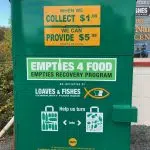
Impressions of Qatar: A World Cup like no other, just like the country itself
DOHA — Qatar has been no ordinary FIFA World Cup. More like a one-of-a-kind tournament in a one-of-a-kind country.
With eight stadiums within one hour of each, either in or around Doha, the men’s soccer showcase is a far cry from previous editions spread across one country or more. The commute for fans and those covering the event is short and sweet.
With oil-rich Qatar funding a reported US$200-billion bill, it’s literally the best tournament money could buy.
The main media centre in the Qatar National Convention Centre, a sprawling modern space that covers 200,000 square metres, comes with world-class art with a price tag to match. Sandwiched between a McCafe and assorted help desks is Louise Bourgeois’ “Maman,” a giant spider sculpture — a version of which sold for US$32.1 million by Christie’s in 2019.


